Future Now
The IFTF Blog
Myanmar Futures Exchange 2014
It's become a truism of our age that the world is changing at an accelerating pace, and uncertainty is great. I recently returned from a place where this sentiment seems to echo from the thousand year old golden pagodas all the way to the street markets overflowing with fish, meat and produce. This is Myanmar, the second largest South-East Asian country nestled between global super powers India and China.
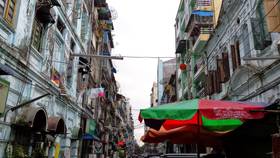
Since 2011, Myanmar has made the liminal state a way of life. There's a cautious optimism in the air. The over 40 year span of harsh military rule is coming to a close, and transitioning into a "discipline democracy." The liberalization of the market opened the flood gates to massive amounts of foreign direct investment. For the first time, foreign advertising and products hang from rural, thatched roof tea shops and plaster urban billboards. A new constitution, authored by the military, ensures freedom of expression and equal rights. Most political prisoners are finally free (though some say authorities are adopting a "catch-release-catch again" policy), and the World Bank has laid out a $2 billion dollar program to increase access to health care and energy.
In a unique time ripe with opportunities and challenges, the East-West Center partnered with the British Council, the Institute for the Future, and others to create the annual Myanmar Futures Exchange (MFE)—a platform for open dialogue and knowledge sharing between diverse groups and sectors.
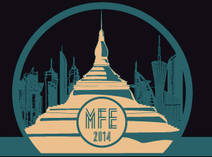
While this time is a great exploration into the unknown for both government and citizens, the Myanmar people, with a generally strong grasp on the past 13,000 years of their history, are not afraid of change. Once, participating in governance by means of free expression meant a grave summons. Now, citizens have more freedom than ever (at least on paper). Spend a day in Yangon and between traffic jams and construction sites, there's an energetic creativity building a slow but critical mass.
The MFE is a global group of students, educators, futurists, and researchers who work with local partners like Proximity Designs, Deitta, Myanmar Egress, Spectrum Sustainable Development Knowledge Network, New Zero Art Gallery, and others to catalyze the creativity of citizens building the future of Myanmar. Through social technologies, space, time, and information, our aim is to support "civic creatives" working in their communities through foresight-insight-action models and leadership development.
The inaugural event, held in 2013, made history: it was the first foresight workshop in Myanmar. A two-day conference, the event brought over 200 stakeholders together in Yangon to discuss economic futures.
For the MFE 2014, I joined a design team that included educators, futurists and researchers from the East-West Center, Northover Research, the Forum for the Future, the Hawaii Center for Futures Studies and the Center for Postnormal Policy and Futures Studies.
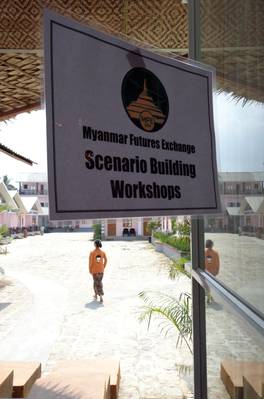
We dedicated ourselves to the idea that giving voice to distributed ideas about the future builds a more resilient present. Rather than operating only in the urban center of Yangon, we experimented with a participatory futures research method while in the field in rural Shan State, Mandalay Division, Kayin State and Mon State. Though we would have liked to cover much more ground, we looked at it like an iteration on a method to amplify stakeholders' futures through field research.
Over a two week period, we used scenario building workshops to teach foresight tools, research the diversity of perceptions of the future, identify key issues, and build over 328 scenarios of Myanmar in 2025. Finally we helped participants identify points of action to begin creating their preferred futures.
On the ground research brought up several key challenges which we called drivers of change. Aggregating the research from the field, we used stories from over 560 Myanmar citizens to identify 10 major drivers of change, and invited local political cartoonists to illustrate them. (See the gallery here.)
On May 3, we held a final MFE 2014 symposium, convening 60 community leaders who work in fields ranging from governance, arts and culture, environmental conservation, investment and technology. Participants began with a framing session, taking the top ten drivers from our field research and prioritizing them while also mapping influences, both personally and in small groups. The goal was to identify the factors that drive events, recognize where we want to act most, and highlight the interconnectedness of the drivers. Using the open source mapping tool Gephi, we leveraged the collective intelligence of the group to find drivers most embedded in the network of influences. The three most influential and influenced drivers were:
- Access to Quality Education
- Responsive Governance
- Financial System Reform
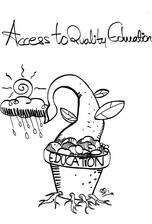
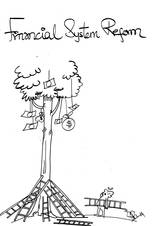
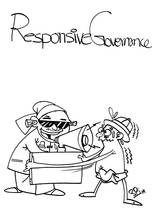
Participants then chose one of these drivers and, in small groups, used the Causal Layered Analysis method (as developed by futurist Sohail Inayatullah) to dig deeper into the underlying cultural narratives. We used the imagery of the iceberg to represent drilling down into the issue to uncover the deeper assumptions which perpetuate it, then climbed back up the tree to reframe the challenge into an opportunity. Finally, participants created headlines from a Myanmar newspaper in 2025.
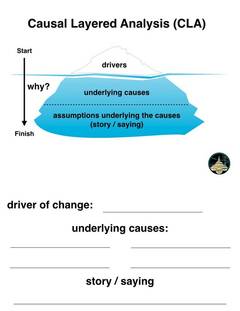

While the power in the five star hotel ballroom flickered on and off—no one escapes the periodical city wide black outs—I walked around the tables facilitating participants young, old, female, male. With an intelligent bravery in their eyes they openly expressed the fears and desires always latent in possible futures - to some degree a personal risk only a few years ago.
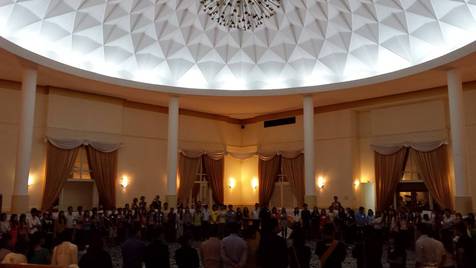
There was a palpable sense hope for the future in the room because the young entrepreneurs, social activists, government officials, professionals, teachers and students who became an integral part of MFE 2014 were not afraid to face the challenges, and while doing so saw the opportunities within them. There was a recognition of the steady flow of time which unites us as a species - and those moments in history when we are called upon to act.
Lindsea K. Wilbur is a current Research Affiliate with the Governance Futures Lab exploring the emergent governance structures of inner and outer space. She's on a mission to empower communities around the world to reconstitute their civic governance systems using our Inventor's Toolkit.



